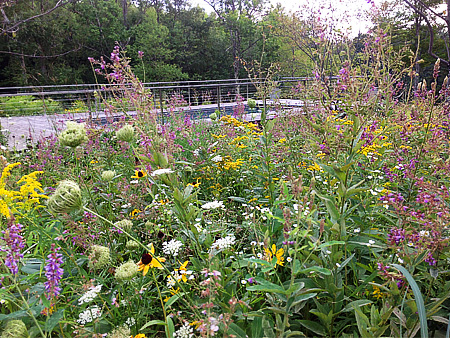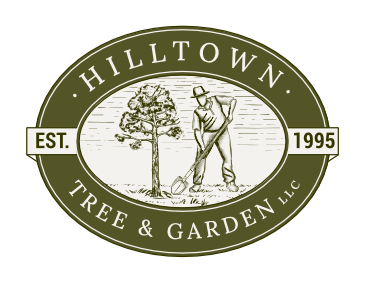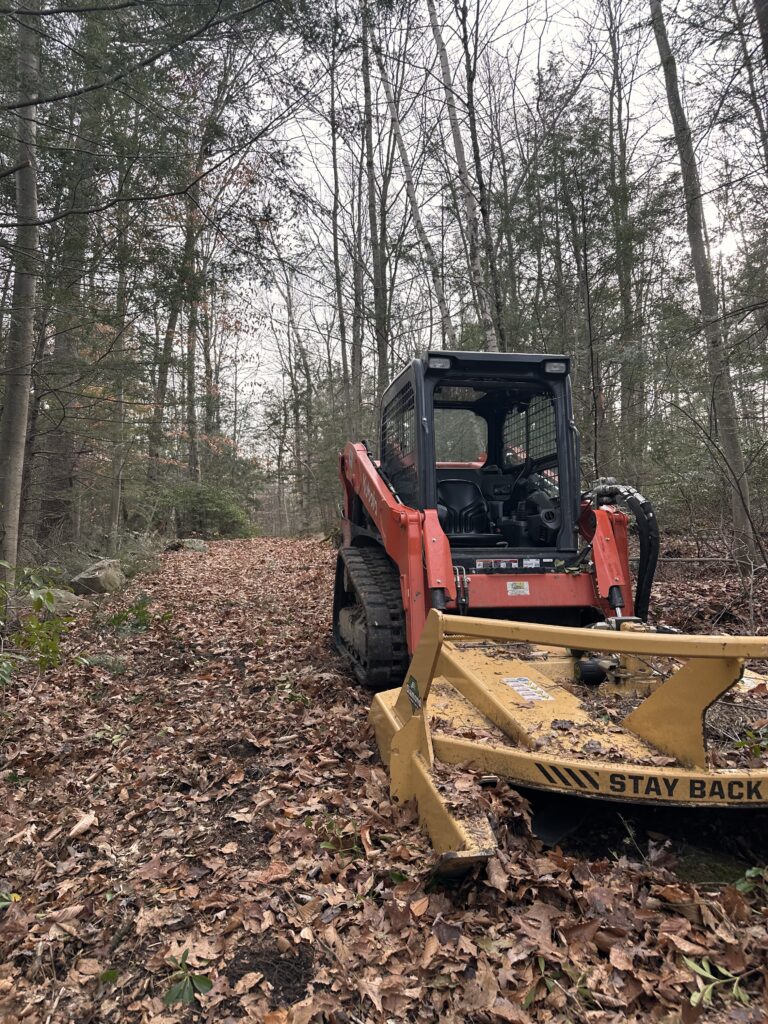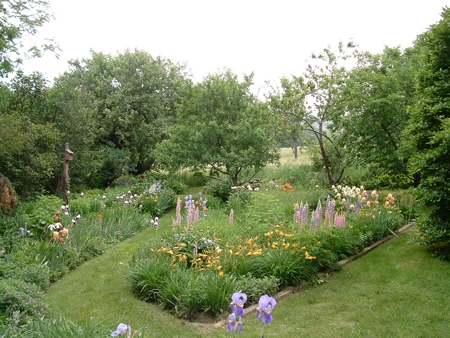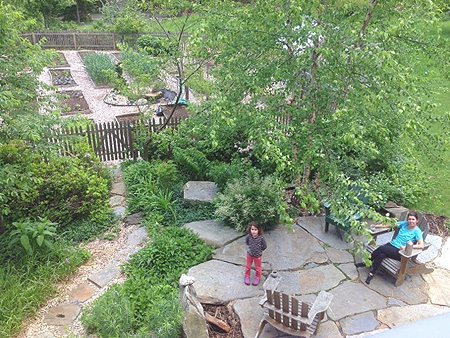Our work at this Worthington home was diverse: two understory native fern glades, native conifers and shrubs, perennial gardens, and a native tall grass wildflower meadow beside an authentic, traditional New England stone wall with path.
The site for the meadow surrounds a newly built tennis court, pool and pavilion. Both the owner and Hilltown Tree & Garden agree that a traditional lawn was not appropriate. The soil had been stripped off and compacted. They had to aerate the soil and add over 100 yards of compost and topsoil. In the fall, six months before planting, they planted a cover crop of annual rye to hold the bare soil in place, add fertility with organic matter, to out-compete any winter annuals that may germinate and to act as a mulch for springtime seeding. In the spring, the soil was seeded and the photos you see were taken after six months. This seed mix was custom-blended to give four season interest, attract wildlife, and be self-sustaining. This meadow will morph over the first few years and then reach homeostasis.
The wall we rebuilt was a pile of stones when they started. It was probably originally built over 150 years ago when the property was a working farm. We spread the stones out and dug a trench to put in 12″ of gravel for a foundation. Then piece by piece the wall was carefully rebuilt using the same kind of time-tested craftsmanship with which it was originally built. All the original stones were used, so it maintained its original rustic character. Now it may very well stand for another 150 years.
Before: The photo shows the site during the initial deconstruction of the fallen down stone wall. The wall stones were separated, gravel for the foundation delivered, and soon the excavation for the foundation would begin. What would be a meadow was originally a compacted mud pit due to previous construction on the pavilion.

After (1 Year Later): The stone wall has been rebuilt, the wildflower meadow and a perennial garden installed.
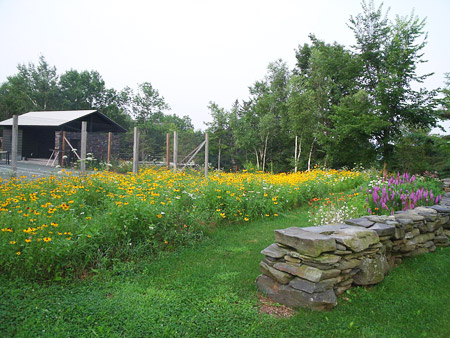
Before: A view of the stonewall and wildflower meadow under construction.

After (1 Year Later): The wall and the meadow after construction and installation.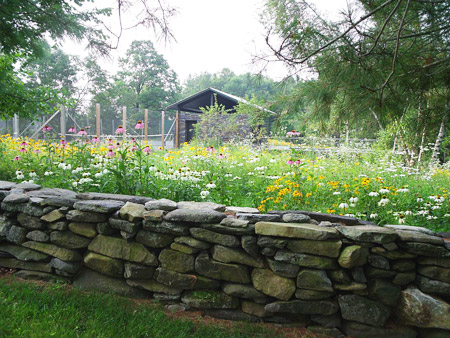
Before: Stonewall before the rebuild. The wildflower meadow before the installation.

After (1 Year Later): The stonewall after it was rebuilt with a deep gravel foundation. The style of the rebuild was an attempt to keep its character with the original wall. On one side of the wall, three white flowering Donald Wyman crabapples were planted. On the other side, perennials were planted. These are Echinacea (coneflower), liatris, gaillardia, and baptisia. They were chosen because they were a good companion to the wildflower meadow.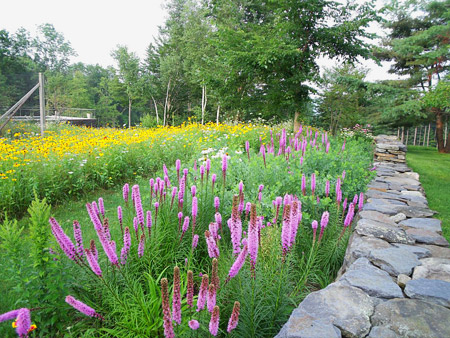
The pavilion and the meadow in full bloom.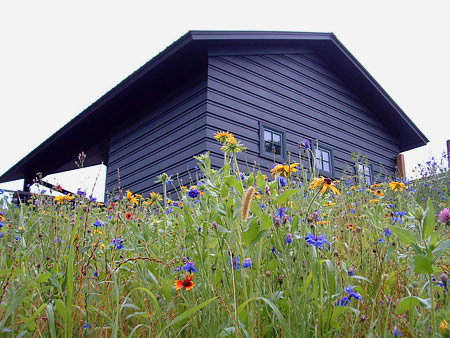
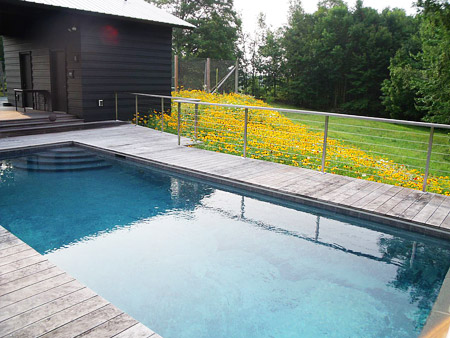
The perennial garden along the stone wall was installed the previous fall. When you match the plant to the site, you get a tremendously vigorous plant. Matching the plant to the site is done by evaluating the fertility, sun exposure, drainage, and micro-climates. The flowers in the garden are perennial gaillardia, liatris, baptisia, and coneflower (Echinacea). Once the stone wall was installed at the Worthington site, a perennial garden was planted beside it, as pictured.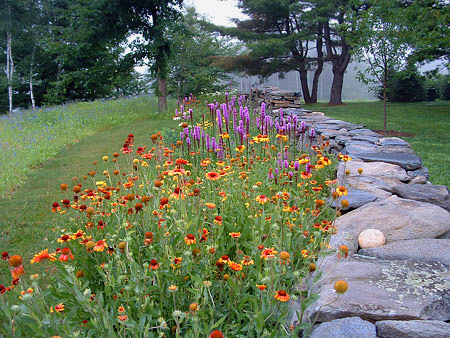
The Black-eyed Susans give many months of color to a wildflower meadow. The trees in the background are the native serviceberries or shadblows. They were chosen for their white spring flowers, tasty fruit, wildlife value, fantastic fall color, and four seasons of interest.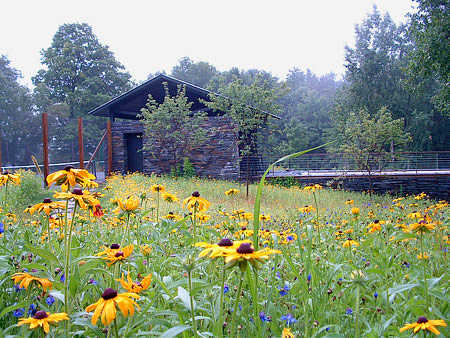
The Evolution of the Meadow, 0-36 Months
0 Months
2 Months
This photo was taken two months after the meadow was seeded. The annual blue bachelor buttons, which are fast growers, came up first. They add visual interest along with providing dappled shade to help the other seeds germinate if conditions are dry. Some annual gaillardia can be seen. The majority of these annuals will not return next year. They will be replaced by longer lasting perennials and tall grasses. This process mimics a natural one. These annual blue bachelor buttons were in bloom two months after the meadow was seeded and the old stonewall rebuilt. Some annual gaillardia can also be seen.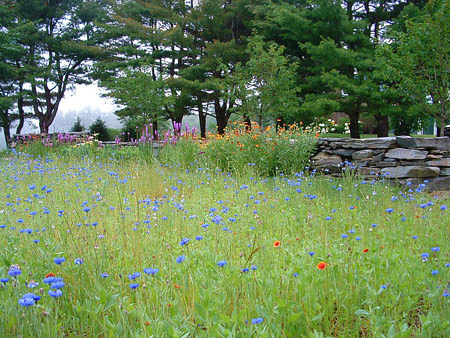
3.5 Months
This photo was taken three and a half months after the meadow was seeded , a month after the above photo from the same angle. The annual bachelor buttons are cycling out and the perennial Black-eyed Susans are cycling in. The tall grasses take the most time to get established. But once they are, they anchor the meadow and give it four seasons of interest.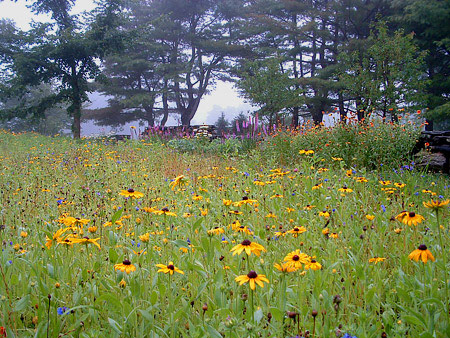
12 Months
One year later, the spring time clover comes in first. It adds spring time visual interest along with nectar for the bees. Clover also has the additional benefit of adding nitrogen into the soil.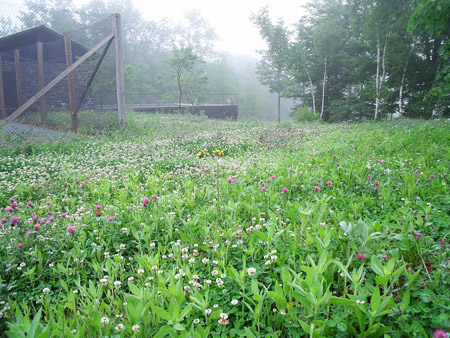
15 Months
This picture was taken 15 months later. The black-eyed susans are now fully established and are the dominant species for the moment. While the annual gaillardia and bachelor buttons are now almost totally gone. Slower growing and longer lived perennial like shasta daisy, baptisia, coneflower and liatris along with native tall grasses are starting to establish themselves.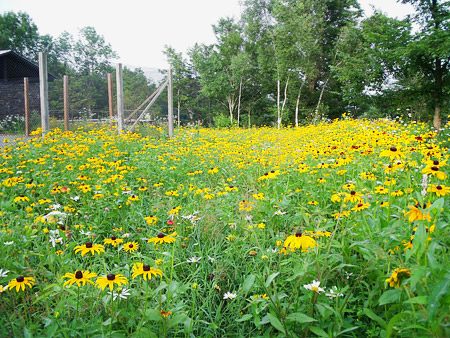
36 Months
The meadow is reaching a point of homeostasis. The short lived perennials and annuals are mostly gone. While the longer lived perennials like the shasta daisies pictured below anchor the meadow through the summer giving way to native tall grasses with ornamental seed heads that will waver in the wind for the winter. By early spring these same seed heads will nourish birds retuning from the southern migration.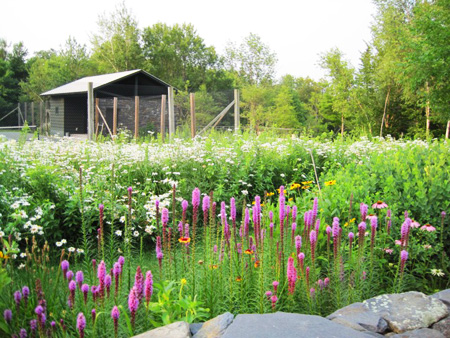
48 Months
Visible in the photo is purple showy tick trefoil, black eye susan, queens anns lace, solidago & various native grasses.